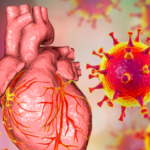
Pct. of residents age 12+ that are fully vaccinated
30
40
50
60%
No data
The Centers for Disease Control and Prevention said on Wednesday about 180.7 million people have received at least one dose of a Covid-19 vaccine, including about 154.9 million people who have been fully vaccinated by Johnson & Johnson’s single-dose vaccine or the two-dose series made by Pfizer-BioNTech and Moderna.
United States vaccinations
*Includes those not yet eligible for the vaccine.
Source: Centers for Disease Control and Prevention | Note: Figures include the U.S. territories and three countries with special agreements.
About 67 percent of adults have received at least one shot. President Biden set a goal on May 4 of reaching 70 percent of adults by July 4. Here’s how states are progressing towards that national target.
Adult vaccination rates by state and territory
How Quickly Are Shots Going in Arms?
Providers are administering about 0.95 million doses per day on average, about a 72 percent decrease from the peak of 3.38 million reported on April 13.
New reported doses administered by day
Figures show the date shots were reported, rather than the date shots were given and include first and second doses of Pfizer-BioNTech and Moderna, and single doses of Johnson & Johnson.
Daily reported doses given by manufacturer
Each line shows the seven-day average.
In December, federal regulators gave emergency use authorization to two-dose vaccines developed by Pfizer-BioNTech and Moderna. Regulators authorized Johnson & Johnson’s one-dose vaccine in February, but recommended a pause in its use on April 13 because of reports of blood clots in a small number of patients. All 50 states paused or recommended that providers pause those vaccinations. The government ended the Johnson & Johnson pause on April 23, clearing the way for states to resume vaccinations.
Johnson & Johnson doses that were already administered or distributed continued to appear in the federal vaccination data during the halt in use.
When Might a Majority of People Be Vaccinated?
Some experts have estimated that 70 to 90 percent of the total population — adults and children — needs to acquire resistance to the coronavirus to reach herd immunity, when transmission of the virus substantially slows because enough people have been protected through infection or vaccination.
A number of factors will determine how quickly this threshold is met, especially the pace at which newly vaccinated people join those who are immune after past infections. But the presence of more transmissible virus variants could complicate that progress. And children, who aren’t yet eligible, may be key to reaching herd immunity, experts say.
The projection below only shows the share of the total population with at least one shot based on the current rate of newly vaccinated people, but it provides a rough indication of when the virus’s spread could begin to stall.
At the current pace of vaccination, many people could get a shot this year. But no vaccine has been authorized for children under 12.
Based on the seven-day average of people receiving a first or single dose each day.
But the pace of vaccinations varies across the country. Several states in the South and West, for example, have vaccinated a smaller share of their population with a first or single dose than in other regions.
How each state compares to the national share of vaccinated people
Share of the state population that has received at least one shot.
There are many reasons eligible people may not be vaccinated, including, in some areas, lingering issues of short supply, limited access to vaccination sites and confusing procedures for booking appointments. Some people are hesitant or unwilling to get a shot.
The New York Times recently analyzed vaccine records and voter records in every county in the United States and found that both willingness to receive a coronavirus vaccine and actual vaccination rates were lower, on average, in counties where a majority of residents voted to re-elect former President Donald J. Trump in 2020.
Are The Most Vulnerable Counties Being Vaccinated?
Speed isn’t the only priority for the country’s vaccination campaign. The Biden administration has also committed to distributing shots equitably to the communities most affected by the pandemic.
Yet more than five months into the rollout, the most socially vulnerable counties in the U.S. have a lower vaccination rate on average than the nation’s least vulnerable. The majority of the most disadvantaged counties with the fewest fully vaccinated people are in the South, while the most vaccinated, least vulnerable counties are in the Midwest and Northeast.
Vaccination rates by county social vulnerability
Share of total population fully vaccinated. Circles sized by county population.
Counties are ranked according to the Social Vulnerability Index, a C.D.C. indicator used in public health crises that is based on socioeconomic status, housing, transportation, race, ethnicity and language. Each county’s vaccination rate is its share of all residents that have been fully vaccinated, a figure that does not reflect those who have only received one dose of a two-shot vaccine.
How Is Each State Doing?
Some jurisdictions have been more efficient than others at administering their doses from the federal government.
Pct. of all residents given at least one shot
42
48
54
60%
The table below includes states, territories, federal agencies and three countries with special agreements with the United States: Palau, Micronesia and the Marshall Islands.
People that have received the single-shot Johnson & Johnson vaccine are included in counts for those with “at least one dose” and those “fully vaccinated.”
| Percent of people | |||
|---|---|---|---|
| Name | Given at least one shot | Fully vaccinated | Doses used |
| U.S. total* |
54% |
47% | 85% |
| Palau |
79% |
73% | 102% |
| Vermont |
74% |
66% | 93% |
| Massachusetts |
70% |
62% | 91% |
| Hawaii |
70% |
52% | 86% |
| Connecticut |
67% |
61% | 93% |
| Maine |
66% |
61% | 87% |
| Rhode Island |
65% |
59% | 84% |
| New Mexico |
63% |
54% | 101% |
| New Jersey |
63% |
55% | 85% |
| Pennsylvania |
63% |
50% | 89% |
*Includes doses provided to Palau, Micronesia and the Marshall Islands.
Source: Centers for Disease Control and Prevention; U.S. Census Bureau | Note: Extra doses in Pfizer vials and data reporting inconsistencies may result in the percentage of doses used adding up to more than 100. Geographically isolated areas such as Alaska, American Samoa, Guam and the Northern Mariana Islands can place orders for multiple weeks at once.
There are many reasons for variation among the states and territories, including demand for the vaccine, lags in data reporting and other logistical challenges. State progress varies by age group as well.
Percentage of residents given at least one shot, by age group
| Name | 12 to 17 | 18 to 64 | 65 and older |
|---|---|---|---|
| U.S. total* |
|
|
|
| Hawaii |
|
|
|
| Vermont |
|
|
|
| Massachusetts |
|
|
|
| Connecticut |
|
|
|
| New Jersey |
|
|
|
| New Mexico |
|
|
|
| Maine |
|
|
|
| Maryland |
|
|
|
| Rhode Island |
|
|
|
| Washington, D.C. |
|
|
|
*Includes people vaccinated in all 50 states, territories and three countries with special agreements with the United States: Palau, Micronesia and the Marshall Islands. Data is not available for residents of Idaho under 18.
Sources: Centers for Disease Control and Prevention; Andrew Beveridge, SocialExplorer
Who Is Eligible for a Vaccine?
The United States has cleared an important milestone in its vaccine rollout: All people 12 and older are now eligible for the coronavirus vaccine in every state, according to a Times survey.
Universal eligibility follows months where states relied on complicated phase-based plans that prioritized certain vulnerable individuals — like older Americans, critical workers and those with certain medical conditions. Often, county plans differed from state plans.
When all adults became eligible for the vaccine in each state
Before April
April 1 through April 14
April 15 or later
Sources: State and county health departments.
Health care workers and residents of long-term care facilities have been eligible for vaccination in every state for months, and people 65 and older have been eligible for months in most states.
The C.D.C. on May 12 expanded the emergency use authorization for the Pfizer vaccine to permit use in children 12 and older, allowing young adolescents to potentially start getting vaccinated before school starts in the fall of 2021.
About the Data
Data on vaccines delivered and administered comes from the Centers for Disease Control and Prevention, which updates data daily and reports detailed footnotes here.
The C.D.C. began reporting county-level vaccinations on March 26. This data is not available for all states, and is incomplete in others, artificially lowering the published vaccination rates for some counties.
Figures include vaccines developed by Pfizer-BioNTech, Moderna and Johnson & Johnson. People receiving the Johnson & Johnson single-shot vaccine are counted as those with “at least one dose” and those “fully vaccinated.”
The federal data may differ from that reported by states and territories, which may post on different schedules. Providers have 72 hours to report doses administered and it can take additional time for jurisdictions and the C.D.C. to receive this information.
The C.D.C. typically reports data as of 6 a.m. each day. On March 13, the C.D.C. reported about 4.6 million new doses administered, including about 1.6 million doses that were reported after the 6 a.m. cutoff, resulting in a visible spike.
On May 16, the C.D.C. reported an erroneous increase in New Hampshire vaccinations, which artificially raised the total doses administered in the U.S. The data has since been updated, with a new U.S. figure for May 16 that is about 620,000 doses lower.
On June 14, the C.D.C. included in its counts about 340,000 additional doses administered from vaccination records that had been received but not fully processed.
The C.D.C. notes that total doses administered are based on the location where the vaccine was given, and that in limited cases, people might get a vaccine outside of their place of residency. As of Feb. 23, the C.D.C. reports the number of people receiving one or more doses based on where individuals reside.
On Feb. 19, the C.D.C. began including shots given by the federal agencies in each state’s count. Doses delivered to federal agencies were added to state totals on Feb. 20. Some states, including Alaska, North Dakota and Utah, are supposed to receive supplements for tribal governments that have elected to receive their vaccines through the state, rather than through the federal Indian Health Service.
In addition to delivering vaccines to states, territories and some federal agencies, the C.D.C. also distributes doses to three small countries that have special agreements with the U.S. government: Palau, Micronesia and the Marshall Islands.
The C.D.C. also reports state-level data on the number of shots administered to people in nursing homes and long-term-care centers.



